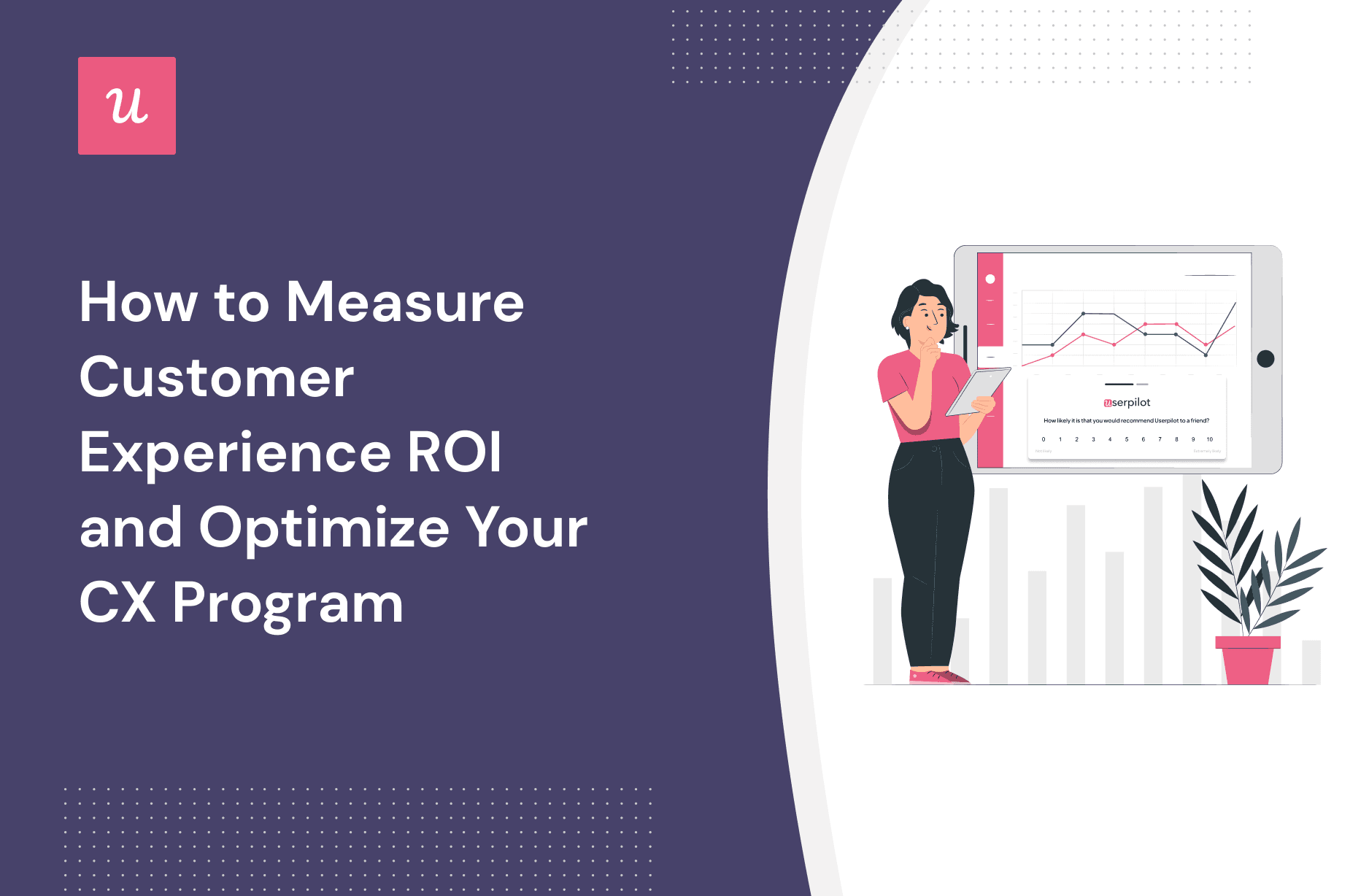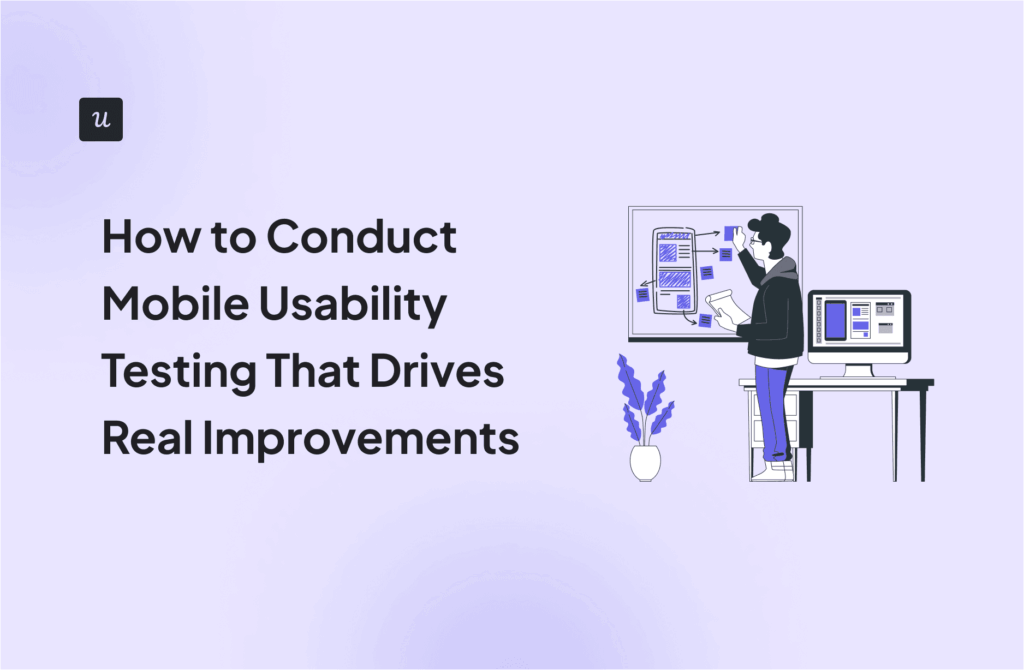
How to Measure Customer Experience ROI and Optimize Your CX Program
Justifying improvements to CX without measuring your customer experience ROI can be hard. You need to prove that you’re making a difference and that metrics like customer retention are improving.
This article will help you measure your ROI of customer experience and optimize your CX program.
Get The Insights!
The fastest way to learn about Product Growth, Management & Trends.
What is customer experience ROI?
Customer Experience ROI, or Return on Investment, measures the financial value generated by customer experience initiatives.
Calculating customer experience ROI is challenging due to the complexity of measuring intangible factors such as customer satisfaction and loyalty.
However, it can help you to understand the impact of any improvements in CX. Customer experience leaders prioritize ROI analysis to justify investments and drive continuous improvement.
What are the benefits of customer experience investments?
Even though customer experience ROI may be challenging to measure, it certainly doesn’t mean you shouldn’t bother.
Forrester surveyed experience-driven businesses (EDB) and non-experience-driven businesses (Non-EDB) and found tangible benefits to making customer experience investments. Measuring CX ROI will help you to:
- Increase the customer lifetime value: EDB saw an improvement of the customer lifetime value of 60% compared to 35% in Non-EDB.
- Increase retention: EDB saw an improvement in customer retention of 66% compared to 47% in Non-EDB.
- Build customer loyalty: EDB saw an improvement in customer advocacy of 58% compared to 35% in Non-EDB.
- Increase in revenue growth: EDB saw an improvement in revenue growth of 17% compared to 10% in Non-EDB.
It’s clear from statistics like these that it’s beneficial to consider the positive impact that customer experience improvements can make.
How to estimate the ROI of customer experience?
Want to know how you estimate your ROI of customer experience now you know it can benefit your product? Good. Here are some great ways to do so.
Collect customer feedback to measure customer experience
Firstly you need a starting point to see how your changes make a difference to the customer experience.
One of the best ways to do this is by collecting customer feedback. You can either use an NPS or CSAT survey to collect information directly from the customer. Afterward, calculate the NPS score and use it as a benchmark.

Build hypotheses to identify how an increase in the CX metric impacts critical customer behavioral metrics
Next, you need to identify how customer experience can impact business value through valuable metrics such as customer churn rate.
You can use analytics to see if they are any past trends that can help you create a realistic hypothesis between customer experience and churn rate.
For example, you can create a hypothesis: if you manage to raise the NPS by 10ppt, it decreases your churn rate by 1ppt.
You can also consider how improving customer experience can increase upsell opportunities, more customer referrals, and lead to fewer complaints and fewer product support cases.
Test your hypotheses
Now it’s time to run an experiment to see if your hypothesis is correct by targeting customers with high NPS response scores.
For example, as discussed above, one hypothesis could be that a better customer experience can increase upsells.
To work this out, you can segment users with high NPS response scores and trigger a contextual upsell prompt. You run this experiment until over 100 people respond and see if your hypothesis is correct.

Calculate the impact of behavioral metrics changes on financial metrics
Hopefully, at this stage, your hypothesis has been proven right, and now you can move on to what will make your business leaders happy; how NPS and financial metrics connect.
You can review how those with high NPS have impacted revenue, for example, if the churn rate reduces by X% and the revenue increases by Y%.
Understand what impacts the customer experience metric
You can dive deeper into what affects the customer experience metric by following up on your NPS surveys.
From a customer perspective, you can ask questions to better understand what has helped increase their NPS or caused a bad score.
Any bad scores can mean your product is missing valuable features, or unhappy users could have had poor customer experience or services.
Any good scores mean you have satisfied customers. Follow-up questions will help you understand why. It could be from things such as contextual onboarding or great self-service options.

Measure the financial benefit of fixing the issues mentioned by detractors
You can then tag issues unhappy customers have raised and see how many users have the same issues. Then you should consider if it’s worth fixing by looking at the cost and how greatly it would benefit customers.

CX metrics to measure the ROI of customer experience
There are two groups of metrics that you can use for measuring customer experience; customer satisfaction and business growth metrics.
Customer satisfaction metrics
You can measure customer expectations using three great satisfaction metrics; customer effort score, NPS, and customer satisfaction score.
- Customer effort score, or CES, helps measure a customer’s effort to complete a task. A CES survey is usually triggered after a user takes an action. A survey will show a range (such as from “Very Easy” to “Very Difficult”) where a user rates the effort of the task they just did.
- NPS stands for Net Promoter Score and measures a customer’s likelihood of referring your product to others. Usually, you use a simple question, such as “On a scale of 0 to 10, how likely are you to recommend our product to a friend or colleague.” Responses are put into three groups: Promoters, Passives, and Detractors.
- Customer satisfaction score or CSAT measures customer satisfaction with a product. It is typically captured by a survey with a scale where customers select their satisfaction level. CSAT score is then calculated into a percentage, dividing the total of customers who rated 4 or 5 out of 5 by the overall number of respondents. The higher the percentage, the higher level of customer satisfaction.
Business growth metrics
You can measure three business growth metrics for customer experience; customer retention rate, customer churn rate, and customer lifetime value.
- Customer retention rate is the percentage of customers you retain over a specific timeframe. You use it to measure the effectiveness of the efforts to retain and foster loyal customers. You typically calculate the customer retention rate by dividing the number of customers at the end of a specific timeframe by the number of customers at the beginning of that timeframe and multiplying by 100.
- Customer churn rate is the percentage of customers who discontinue their relationship with you within a specific timeframe. You typically calculate the churn rate by dividing the number of customers lost during a timeframe by the total number of customers at the beginning of that timeframe and multiplying the result by 100.
- Customer lifetime value estimates the total value a customer will bring over the entire duration of their relationship. There are different ways to calculate CLV. However, a commonly used formula is to work out the average revenue per account (ARPA) and the customer churn rate for a specific timeframe. Then divide ARPA by the customer churn rate.
Conclusion
You should not dismiss the impact customer experience can have on your product. It can be challenging to measure, but after reading this article, you’ll have a better understanding of measuring the ROI of customer experience and how you can conduct experiments to improve revenue impact.
Want to get started with measuring customer experience ROI? Get a Userpilot Demo and see how you can collect customer data and feedback without writing a single line of code.






